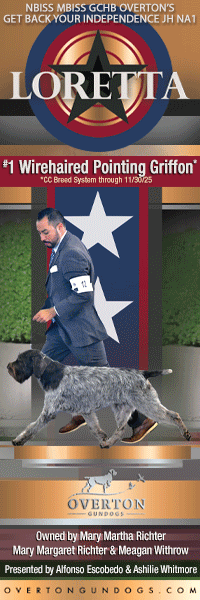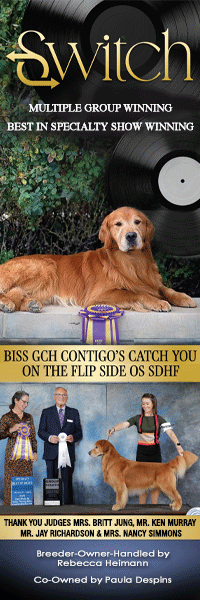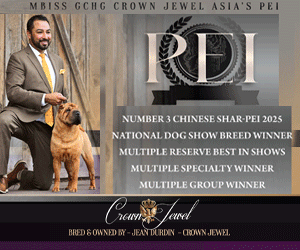Westminster Welcomes the Treeing Walker

by Amy Fernandez
This year, Westminster welcomes the Treeing Walker. The sixth AKC recognized Coonhound, it entered the Hound Group in January 2012. Although it’s a newcomer to AKC conformation, it has plenty of street cred as a hunter and outstanding competitor in performance events.
Measuring 20-27 inches and weighing 50 and 70 pounds, the Treeing Walker is squarely proportioned, sturdy and agile. Its flat, dense, hard coat is usually tri-colored. Bi-color and black saddle markings are also common. Prized for its reliability, unrivaled treeing aptitude, and clear, ringing voice, this hot-nosed hound shares many traits with its slightly leaner, racier, and faster parent breed, the Walker Hound.
The Walker Hound was one of many American Foxhound strains derived from British and Continental hounds imported in the early 1700s. Because most of these foundation strains originated in the Virginia colonies they became known as Virginia Hounds. The Walker was developed by George Washington Maupin and John W. Walker, Madison County, Kentucky neighbors with a mutual love for hounds and hunting. For 50 years they selectively bred Virginia Hound stock to create their ideal running hound. They weren’t seeking an outcross in 1852 when their line got its first infusion of Foxhound courtesy of their friend and neighbor Tom Harriss. Harriss, a livestock dealer, was returning home from Virginia when he encountered a running Foxhound pack in the Tennessee Mountains. Quick thinking Tom scooped up a hound, known to posterity as the famous Tennessee Lead.
Walker and Maupin were initially skeptical when Harriss presented them with this souvenir from his trip up north. But they couldn’t argue with the results. Lead imparted incredible gameness, drive, and speed to local stock and goes down in history as a foundation sire of Goodman, Trigg, July, and Walker strains. Subsequent imports solidified the Walker’s English Foxhound cross. Originally called Mauphin hounds, Mauphin’s spotty recordkeeping left the Walker family to maintain the project. By the 1860’s the Walker was well established throughout the south and its reputation was nationwide by the 1900’s.
It also became the foundation for the most popular treeing hound. Wily American quarry effortlessly eluded running packs by climbing trees or diving into rivers and swamps. To overcome this, several running hound breeds were selectively bred to enhance treeing and trailing instinct, work that demanded confidence, hardiness, determination, and versatility. Coonhounds take their name from their primary quarry, but they were also used for game ranging from squirrel to black bear and mountain lion.
Countless regional Coonhound have disappeared but several have been formally recognized. Although the Treeing Walker was UKC recognized in 1905 as a variety of English Fox and Coonhound it continued to be documented by private registries throughout the 1940’s and initially showcased its talents at American Coon Hunters Association Wild Coon Hunts. UKC classification was amended to English Coonhound (Walker Treeing). In 1945, it was separately recognized as the Walker (Treeing) finally UKC restored the breed’s original name in 1978.
Today, Treeing Walkers account for half of America’s purebred Coonhounds. They have topped UKC registrations for over 30 years, but UKC is a performance oriented registry. We will soon learn how the Treeing Walker fares in AKC. It entered the FSS program in 1995, became eligible for AKC Companion Events in 2004, and moved into Miscellaneous January 2009, and became AKC’s 174th breed last year. The studbook remains open until January 1, 2020. Currently, the breed’s frontrunner is GCh. Alexander‘s Gold Rush Xcetera. He’s earned a silver grand championship, multiple group wins, and a RBIS.
Short URL: http://caninechronicle.com/?p=14426
Comments are closed











